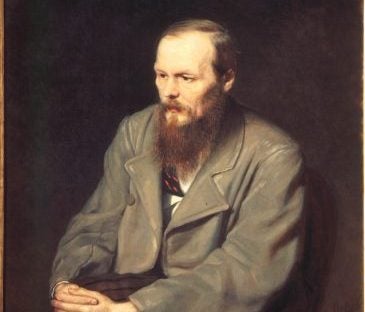There’s much more to Artstor than art
Artstor is not just for art! Yes, this extensive resource includes more than three quarters of a million images of paintings, works on paper, and sculptures, but that’s still less than half of the visual content available in the collections. What else is there, you ask?

Nanna Heitmann. Siberia. Sayana at a wedding, while the air is covered with smoke from the neighboring wildfires. June 2021. Photograph. © Nanna Heitmann / Magnum Photos.
To start with, Artstor offers more than half a million photographs—from the earliest documentarians of the late-19th and early-20th centuries from contributors such as the Center for Creative Photography and the George Eastman Museum to the global photojournalists of agencies like Magnum Photos and Panos Pictures capturing the world-shaking events of the 2020s.

Vasily Perov. Portrait of Fyodor Dostoevsky. 1872. Image and original data provided by SCALA, Florence/ART RESOURCE, N.Y., artres.com, scalarchives.com
We could list dozens of collections devoted exclusively to fashion and costume, gardens and landscape, graphic design and illustration, and other subjects, but of course there are other ways you can use the content in Artstor for disciplines outside of art history. For example, you can find inspiration from examples and case studies written by instructors and our in-house experts on how to use Artstor for studying and teaching literature, medicine and medical history, and architecture and architectural history.

Science Museum Group. London Midland & Scottish Railway Collection. The “Coronation Scot” train at Penrith. 1938. 1997-7409. From a set of glass and film negatives. Science Museum Group Collection Online. Accessed October 17, 2019. https://collection.sciencemuseumgroup.org.uk/objects/co423016. CC BY 4.0.
Also worth noting, Artstor includes a variety of interdisciplinary collections, such as the Library of Congress’s Eyes of the Nation: A Visual History of the United States, the Museum of the City of New York, and Harvard University’s Schlesinger Library of the History of Women in America. And don’t forget open collections from the National Library of Medicine (history of medicine), the Science Museum Group (history of science, technology, engineering, mathematics and medicine), and the Wellcome Collection (science, medicine, technology, life, and art).

Unknown photographer. Howard University students picket the National Crime Conference, December 1934. Eyes of the Nation: A Visual History of the United States (Library of Congress)
We encourage you to explore how Artstor can enhance your own teaching and research, but we’ll leave you with this: educators, librarians, and researchers at all levels—from secondary schools to graduate programs—have shared with us how they’ve used Artstor, and we gathered 25 of our favorites, touching on topics as varied as medicine, ethnic studies, and women’s studies. Happy researching!